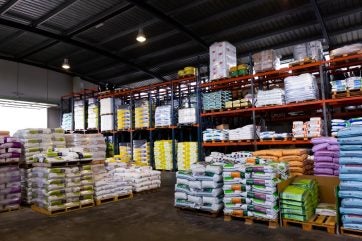
The European Council and European Parliament have made strides towards a provisional agreement on the regulation of digital labelling for fertilising products.
This proposal, if passed, will amend existing legislation to allow for digital labels on EU fertilising products.
The primary goals are to enhance label readability, facilitate more efficient use of fertilisers, and streamline labelling obligations for suppliers while reducing industry costs.
Provisional agreement encourages digital labelling with safeguards
Today’s (16 February) provisional agreement encourages the broader adoption of digital labelling while ensuring provisions for physical labels when necessary.
Under the agreement, digital labels will be available for ten years from the product’s market placement.
David Clarinval, Belgium’s Deputy Prime Minister and Minister for the Self-Employed, SMEs and Agriculture, Institutional Reforms and Democratic Renewal, emphasised that this regulation aims to bolster digitalisation in the fertiliser sector while ensuring all customers, including those with limited digital skills, receive clear, understandable, and consumer-friendly information when purchasing fertiliser products.
Commission proposal and main elements of the agreement
The commission’s proposal suggests allowing suppliers to communicate labelling information through physical, digital, or combined formats.
It proposes that digital-only formats be permissible for products sold without packaging or to non-end users.
Under the provisional agreement, digital labels can be used for bulk products, provided the label information is also available in a physical format at the point of sale.
The agreement reintroduces certain agronomic efficiency information to physical labels for fertilising products described in Annex III of the regulation.
The commission will have the authority to update general digital labelling requirements through delegated acts in the future.
Next steps and background
The provisional agreement reached with the European Parliament awaits endorsement and formal adoption by both institutions.
Digital labels, typically QR or barcode-based, redirect users to web pages where label information is stored.
They offer cost savings and ease of content updates compared to physical labels.
While digital labelling improves information storage and accessibility, concerns persist regarding varying levels of digital literacy among different demographics.
In the EU, digital labelling is already in use for certain chemical-containing products such as batteries, with considerations for expansion to other products, including detergents and cosmetics.
This move towards simplified labelling obligations is projected to yield significant cost reductions for companies.
Regulation (EU) 2019/1009 currently governs fertiliser labelling requirements in the region.
The commission’s proposal, issued on 27 February 2023, seeks to enhance label readability and introduce digital labelling options.







